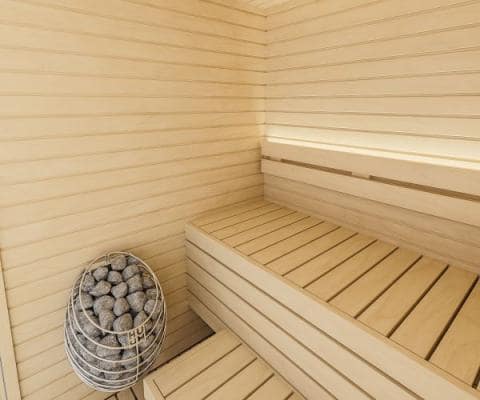The Of Traditional Sauna
The Of Traditional Sauna
Blog Article
About Traditional Sauna
Table of ContentsTraditional Sauna Can Be Fun For EveryoneMore About Traditional SaunaSome Known Incorrect Statements About Traditional Sauna Traditional Sauna - An OverviewMore About Traditional Sauna
Many of the weight shed in a sauna is water loss and is re-gained upon rehydrating. Without a doubt sauna can be a vital component of a healthy weight loss program. To consider the distinctions between traditional and IR saunas, I will certainly separate these into verifiable, academic, and produced differences.Thus, the hottest point in the saunawhich goes to the ceiling directly over the sauna heateris normally between 185 and 190 F. Claims that a typical sauna surpasses 200 F is just not real and not suitable for electric saunas sold in the United States. The temperature for a far-infrared sauna is normally established between 120 and 140 F; nonetheless, unlike the conventional sauna, the objective in and IR space is not to attain a heat.
As a result of this, the temperature difference is virtually unimportant, given that extreme sweating leads to both sauna kinds, yet the approach of heating the body is different. In an IR sauna the bather will certainly really feel warm and will sweat a lot, yet at a lot lower temperature levels (Traditional Sauna). Therefore, if the objective is to invest longer durations of time in the sauna, the IR sauna is an excellent choice
When a typical sauna has been effectively warmed, the sauna walls are cozy, the air temperature level has actually achieved established temperature and the rocks are extremely heated. As a fascinating side note, the heated wall surfaces and the rocks are sending out far-infrared heat, combined with the heated air, to create an "wrapping up warm".
Unknown Facts About Traditional Sauna

When the high temperature is achieved, the aspects cycle on and off to keep the high temperature. Most conventional sauna customers enjoy pouring water over the rocks to produce steam to raise sauna moisture degrees. The benefits of pouring water over the rocks consist of: making the space more comfy, dampening the nasal flows, and allowing the usage of aromatherapy by mixing necessary oils with the water.

When the power goes into the body, it creates the body temperature to enhance go to my site and eventually causes perspiration. In an infrared sauna it is very important for the emitters/heaters to remain on virtually constantly. Since there is no mass of rocks to retain warm, the sauna will certainly cool down if the emitters shut down.
As stated above, the sauna bather in an infrared area wishes to position himself before running emitters to get optimal gain from the heat. The heating time for both areas can be really different, depending on exactly how the spaces are made use of. For a traditional sauna, a bather ought to permit 30-40 mins for the area to attain a wanted temperature level and to properly pre-heat the rocks.
7 Simple Techniques For Traditional Sauna
A well constructed sauna will typically achieve a temperature level of 150-160 F in concerning 30-40 minutes. For hotter temperature levels, the space may need to warmth for a longer period.

Conventional saunas often tend to be bigger (therefore use more power) than infrared saunas, although traditional saunas are certainly available in one and two person dimensions too. For a two-person typical sauna, 5x6 or 5x7 size is most preferred. The top bench can easily seat 2 or three people and is also enough time to relax throughout the sauna session.
Rumored Buzz on Traditional Sauna
The ordinary expense per kWH of power in the U.S. is approximately $0.11, so a 4.5 kW heater will certainly set you back roughly $.50 to compete one hour, if the heater runs continuously for one hour. Commonly a sauna heating system will certainly compete 75% of the very first hour and 50% of subsequent hours on since the elements cycle once the established temperature is accomplished.

Ultimately, there is a seldom discussed distinction in the social experience in between both rooms. While our society has actually lost a few of the social benefit of the typical sauna experience, it can be very socially fulfilling (Traditional Sauna). From family time in the sauna, to heart-felt discussions with significant others, to sauna partiesthe conventional sauna experience can lead to intimate mingling
The 45-Second Trick For Traditional Sauna
Many greater end infrared spaces consist of tinted light therapy, noise systems and full-glass fronts.
Report this page